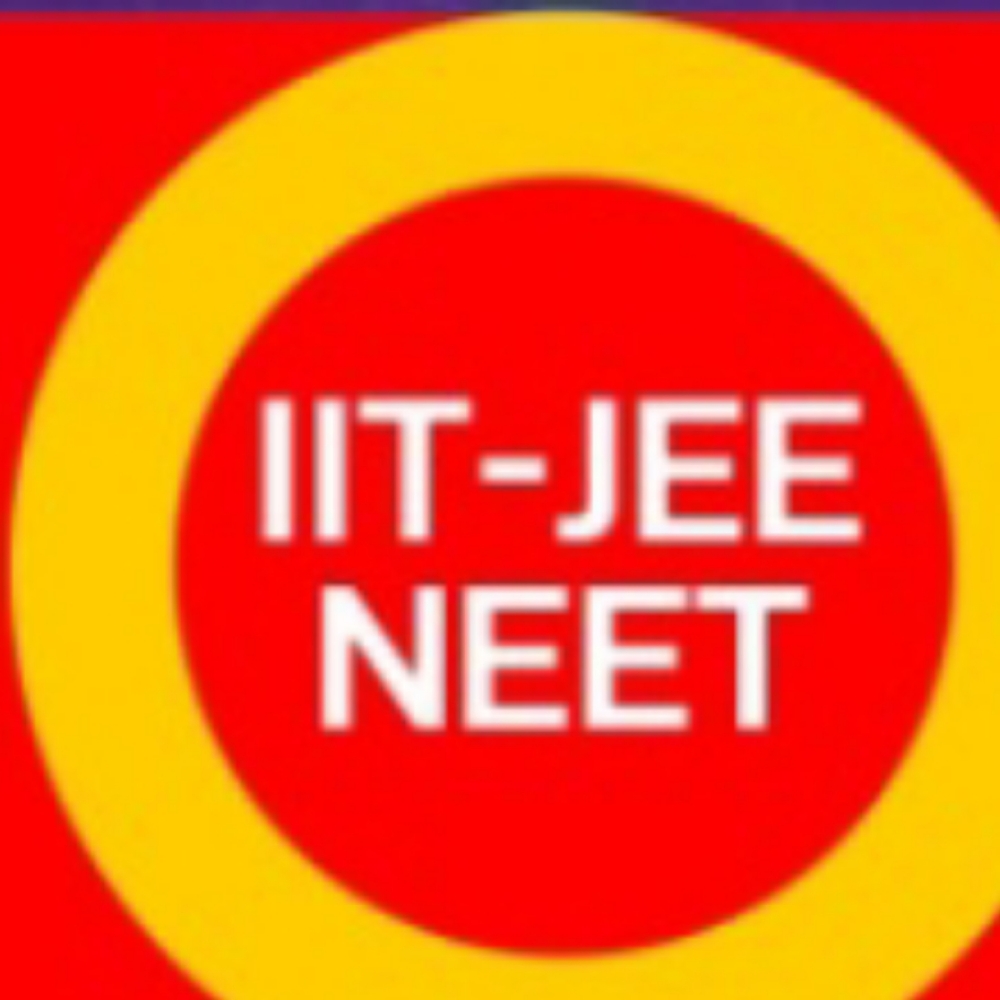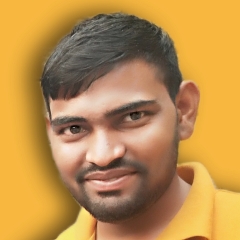Question 1 :
The mirror formula is given by<br>$\displaystyle\frac{1}{v}+\displaystyle\frac{1}{u}=\displaystyle\frac{1}{f}$ where the symbols have their usual meanings. Then the lens formula is given by<br>
Question 2 :
Time taken by the sunlight to pass through a window of thickness 4mm whose refractive index is 1.5 is
Question 3 :
In a compound microscope, if the objective produces an image $l_o$ and the eye piece produces an image $l_e$, then
Question 4 :
The relation between the linear magnification $m,$ the object distance $u$ and the focal length $f$ is
Question 5 :
A man with normal near point $(25 \,cm)$ reads a book with small point using a magnifying glass, a thin convex lens of focal length $5 \,cm$.
Question 6 :
Optical fibres transmit light along its axis, by the process of :
Question 8 :
A real image occurs when rays converge. A virtual image occurs when rays
Question 9 :
Assertion: A concave mirror and convex lens both have the same focal length in air. When they are submerged in water, they will have same focal length. <br>Reason: The refractive index of water is smaller than the refractive index of air.
Question 10 :
If $f$ is the focal length of a lens, then the power of the lens is equal to
Question 11 :
An object is placed on the principal axis of a concave mirror at a distance of 60 cm. If the focal length of the concave mirror is 40 cm then determine the magnification of the obtained image.
Question 12 :
A concave refractive surface of a medium having refractive index $\mu$ produces a real image of an object (located outside the medium) irrespective of its location. Choose the correct option from the following
Question 13 :
A thin plano-convex lens acts like a concave mirror of focal length $0.2$m when silvered from its plane surface. The refractive index of the material of the lens is $1.5$. The radius of curvature of the convex surface of the lens will be :
Question 14 :
The wavelength and frequency of beam of light in water of refractive index 4/3 having wavelength 0.48 micron in air are
Question 15 :
In aerial mapping a camera uses a lens with a $100\ cm$ focal length. The height at which the airplane must fly,so that the photograph of a $1\ km$ long strip on theground fits exactly on the $20\ cm$ long filmstrip of thecamera, is
Question 16 :
An object is placed at a distance of $10 \ cm$ from a co-axial combination of two lenses $A$ and $B$ in contact. The combination forms a real image three times the size of the object. If lens $B$ is concave with a focal length of $30 \ cm$, what is the nature and focal length of lens $A$ ?
Question 17 :
A convex lens of focal length $84\ cm$ is in contact with a concave lens of focal length $12\ cm$. The power of combination (in diopters) is
Question 18 :
A biconvex lens has focal length of 25 cm. the radius of curvature of one the surface is double of the other. Find the radii. given $ { \mu }_{ lens }=1.5 $<br>
Question 19 :
A plano-convex of refractive index 1.5 and radius of curvature 30 cm is silvered at the curved surface. Now this lens has been used to form the image of an object. At what distance from this lens, an object be placed in order to have a real image of the size of the object?
Question 20 :
A ray of light falls into a medium of $R.l.\mu$ from vacuum. The angle of incidence is found to be twice the angle of refraction. Then, the angle of incidence is
Question 22 :
If the tube length of astronomical telescope is $96$cm and magnifying power is $15$ for normal setting, then the focal length of the objective is _________cm.
Question 23 :
On decreasing the wavelength of light, lateral displacement of the emergent ray ................
Question 24 :
Assertion: Thinner lenses have smaller power.
Reason: Power is directly proportional to the focal length
Question 25 :
A travelling microscope is focussed on an ink dot. When a glass slab $(n = 1.5)$ of thickness $9\ cm$ is introduced on the dot, the travelling microscope has to be moved by
Question 26 :
The lateral shift produced by a glass slab increase with _________ in the thickness of the glass slab.
Question 27 :
An object is kept at a distance of $20 cm$from a converging lens of focal length$10 cm$. What will be the magnification?
Question 28 :
The speed of light in air is $3\times 10^8 m/s$. What will be its speed in diamond whose refractive index is $2.4$
Question 29 :
A light ray travels from optically denser medium to optically rarer medium, if the angle of incidence and refraction at point of incidence are $\angle i$ and $\angle r$ respectively, then find the angle of deviation in terms of $\angle i$ and $\angle r$.
Question 30 :
A lens of power +2 diopter is placed in contact with a lens of power -1 diopter. The combination will behave like
Question 31 :
The angle of crown glass $(\mu=1.52)$ prism is $5^o$. What should be the angle of flint glass $(\mu=1.63)$ prism so that the two prisms together may be used in a direct vision spectroscope?<br>
Question 32 :
Image of an object at infinity is formed by a convex lens of focal length $30 \ cm$ such that the size of the image is $2 \ cm$. If a concave lens of focal length $20\  cm$ is placed in between the convex lens and the image, at a distance $26\  cm$ from the convex lens, size of the new image is:
Question 33 :
A beaker containing liquid is placed on a table, underneath a microscope which can be moved along a vertical scale. The microscope is focused through the liquid on to a mark on the table when the reading on the scale is ${h}_{1}$. It is next focused on the upper surface of the liquid and the reading is ${h}_{2}$. More liquid is added and the observations are repeated, the corresponding readings are ${h}_{1}^{'}$ and ${h}_{2}^{'}$. The refractive index of the liquid is
Question 34 :
A point object is placed on the principal axis of the convex lens of focal length 20cm at a distance 40 cm to the left on it. The diameter of the lens is 10cm. If the eye is placed 60cm to the right of the lens at a distance h below the principal axis, then max value of 'h' to see the image is
Question 35 :
The distance between an object and its doubly magnified image by a concave mirror is: [ Assume $f$ = focal length]
Question 36 :
An object 2 cm high is placed at a distance of 16 cm from a concave mirror, which produces a real image 3 cm high. What is the focal length of the mirror?
Question 37 :
When the object is at distance $u_{1}$ and  $u_{2}$ from a lens, a real image and virtual image are formed respectively having the same magnification. The focal length of the lens is :
Question 38 :
A concave mirror has a focal length of $20\ cm$. The distance between the two positions of the object for which the image size is double of the object size is
Question 39 :
The glancing angle of incidence is $10^{\circ}$. What will be the glancing angle of reflection?
Question 40 :
A plano-convex lens, when silvered at its plane surface is equivalent to a concave mirror of focal length 28 cm. When its curved surface is silvered and the plane surface is not silvered, it is equivalent to a concave mirror of focal length 10 cm, then the refractive index of the material of the lens is :
Question 41 :
A plano convex lens of focal length 30 cm has its plane surface silvered. An object is placed 40 cm from the lens on the convex side. The distance of the image from the lens is:
Question 42 :
Assertion: Although the surfaces of goggle lenses are curved, it does not have any power.
Reason: In case of goggle, both the curved surfaces have equal radii of curvature and have center of curvature on the same side.
Question 43 :
Consider a light source placed at a distance of $1.5m$ along the axis facing the convex side of a spherical mirror of radius of curvature $1m$. The position ($s'$), nature and magnification ($m$) of the image are
Question 44 :
The angle of minimum deviation for a ${75^ \circ }$ prism of dense glass is found to be ${45^ \circ }$ when in air and ${15^ \circ }$ when immersed in certain liquid. The refractive index of the liquid is :
Question 45 :
A beaker of height '3h' has a radius 'h'. A thin rod of height 'h' is placed to the wall of the beaker. A person can see the top end of the rod from the opposite edge of the beaker through a pin hole. When the beaker is filled with a liquid up to a height '2h', the person can see the bottom end of the rod. The refractive index of the liquid is :<br/>
Question 46 :
A monochromatic light passes through a glass slab $\left (\mu = \dfrac {3}{2}\right )$ a thickness $90\ cm$ in time $t_{1}$. If it takes $t_{2}$ to travel the same distance through water $\left (\mu = \dfrac {4}{3}\right )$. The value of $(t_{1} - t_{2})$ is :
Question 47 :
A convex lens forms a real image 9 cm long on a screen. Without altering the position of the object and the screen, the lens is displaced and we get again a real image 4 cm long on the screen. Then the length of the object is<br>
Question 48 :
The maximum distance from real object to a real image in a concave mirror is 
Question 49 :
Two thin lenses, when in contact, produce a combined power +10 dioptre. When they are 0.25 m apart, the power reduce to +6 dioptre. The power of the lenses in dioptre, are:<br/>
Question 50 :
A thin prism $P_1$ with angle $6^o$ and made from glass of refractive index 1.54 is combined withanother thin prism $P_2$ of refractive index 1.72 toproduce dispersion without deviation. The angleof prism $P_2$ will be.





































